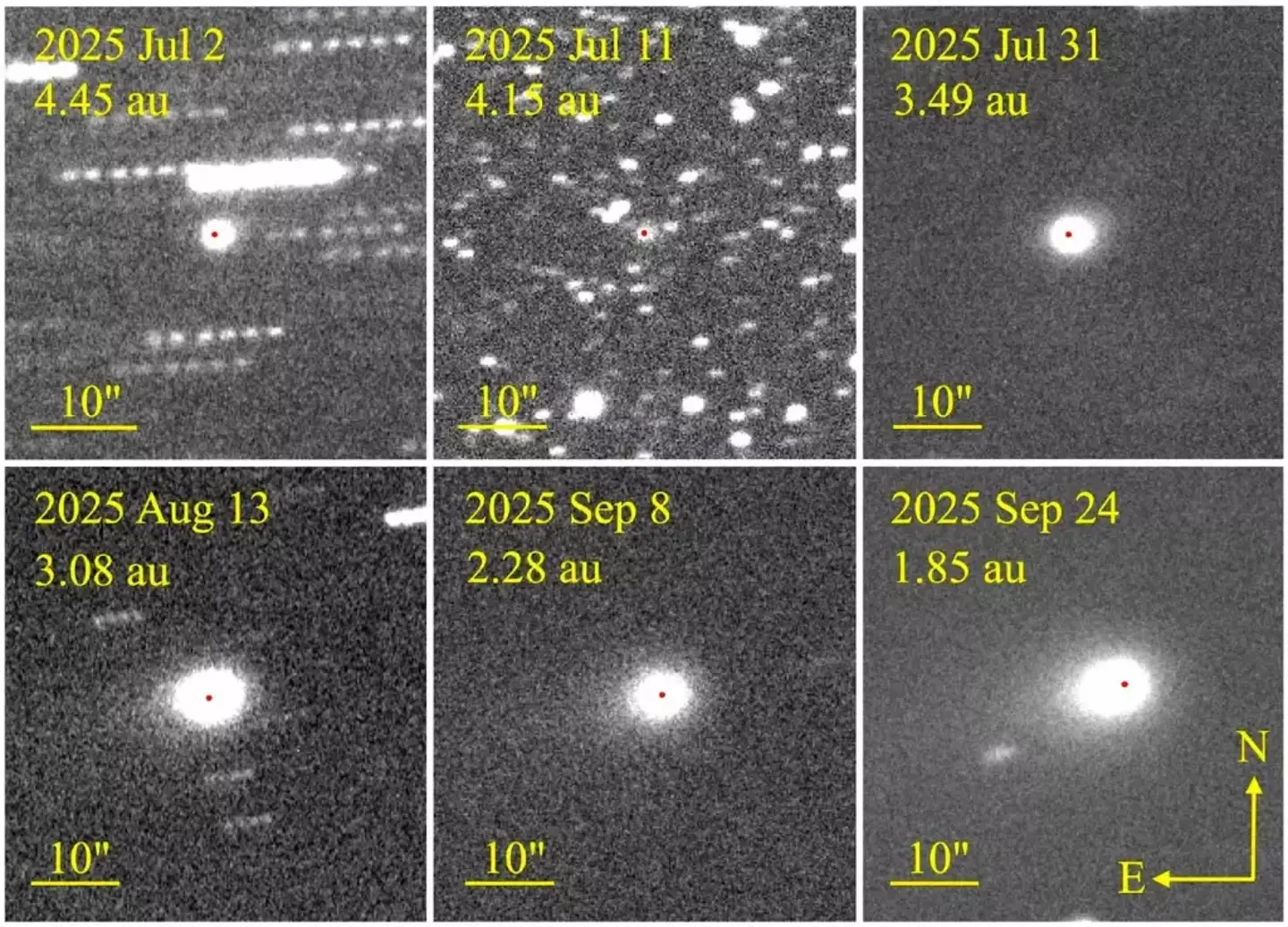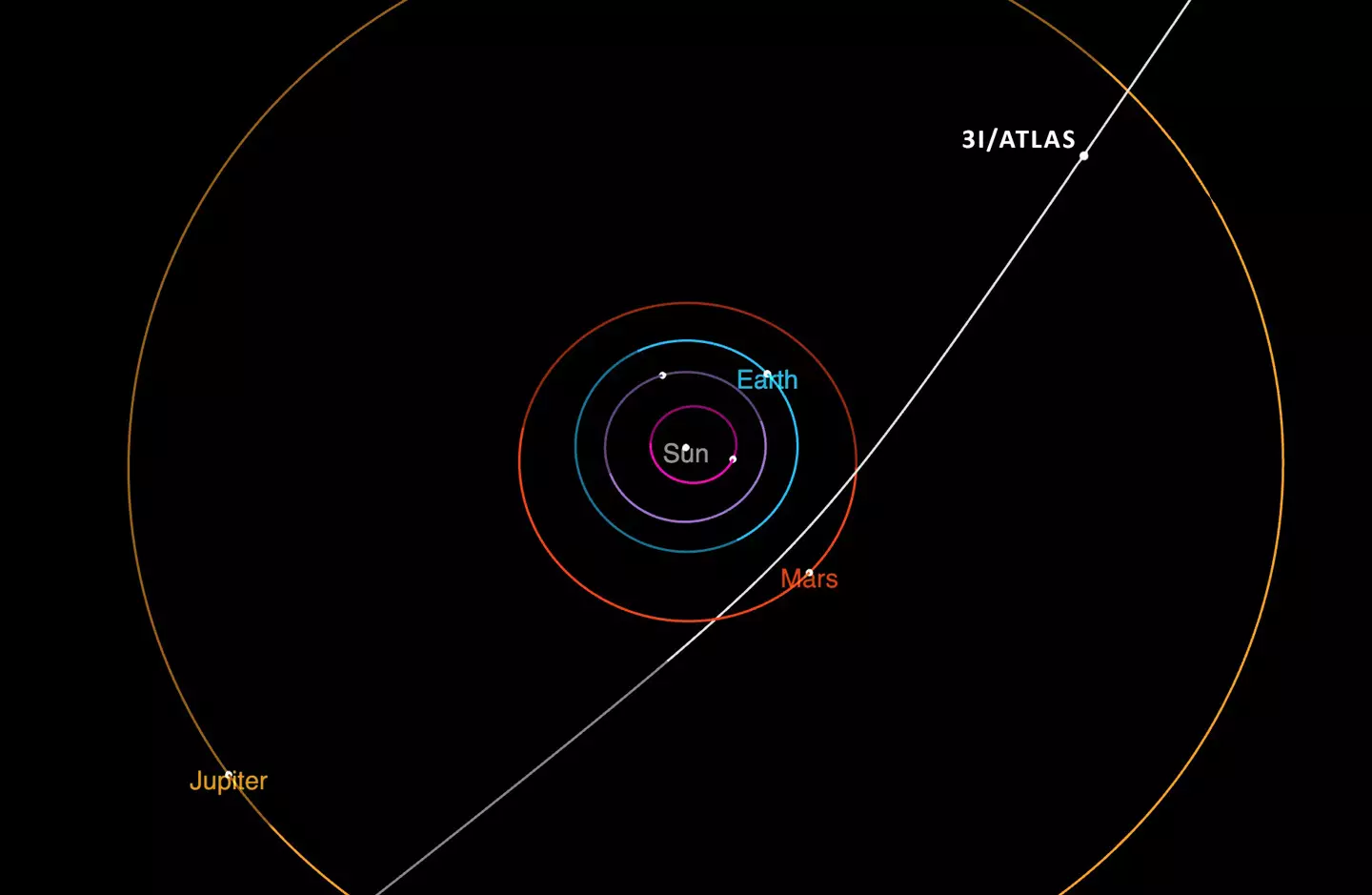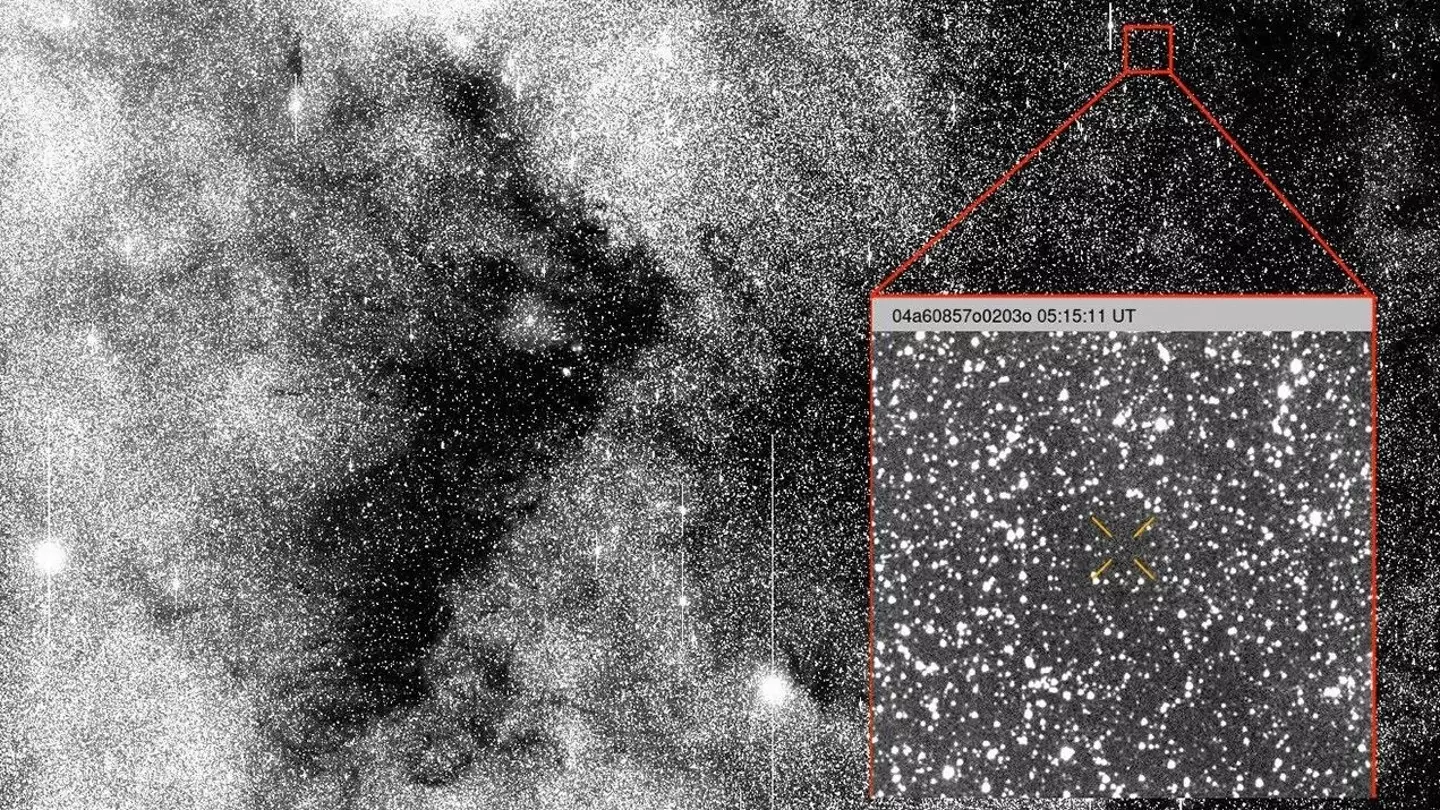Harvard physicist Avi Loeb provides insights into the potential outcomes as the interstellar object 3I/ATLAS nears the Sun.
In July, NASA’s ATLAS telescope in Chile detected a peculiar space object hurtling towards Earth at remarkable speeds.
This object was identified as an interstellar space object (ISO), indicating its origins lie beyond our Solar System.
3I/ATLAS is the third object classified as such, following the discoveries of ‘Oumuamua in 2017 and Borisov in 2019.
Loeb has been interested in the possibility of these objects being alien in nature, even referring to them as potential ‘alien motherships’.
Today, October 29, marks 3I/ATLAS’ perihelion, its closest point to the Sun, coincidentally just before Halloween.

If the object were indeed of alien origin, it would showcase an impressive display of humor and cultural awareness.
In a recent blog post, Loeb delves into how perihelion could unveil more about 3I/ATLAS’ nature.
Today, the object will be subjected to 770 watts of solar heat per square meter. Loeb suggests that if it’s a natural comet, it could disintegrate into smaller pieces that evaporate faster due to their increased surface area relative to mass.
“The resulting fireworks might generate a much brighter cometary plume of gas and dust around it,” he explained.
Conversely, if 3I/ATLAS were ‘technologically manufactured’, Loeb speculates it could ‘maneuver or release mini-probes’.

“Other technological signatures include artificial lights or excess heat from an engine,” he mentioned.
Loeb elaborates that perihelion is the ‘ideal time’ for a spacecraft to adjust its speed using the Sun’s gravitational pull.
“This is also true of a mothership releasing mini-probes that maneuver towards the planets,” he cautioned. It certainly sounds foreboding.
Even if 3I/ATLAS doesn’t dispatch probes towards Earth today, it could potentially do so closer to Christmas.
“On December 19, 2025, 6 days before Christmas, 3I/ATLAS will get to its closest distance of 267 million kilometers from Earth, assuming a purely gravitational trajectory,” Loeb noted in his latest update.
“Will 3I/ATLAS send mini-probes towards Earth as Christmas gifts to humanity?” he speculated.

Loeb has tasked his research team with monitoring ‘any unusual activity by anomalous objects in the Earth’s atmosphere’ using data from the Galileo Observatories in the upcoming months.
In due course, Loeb believes we will gain better insight into the true nature of 3I/ATLAS.
After its closest pass by Earth, the object is expected to fly by Jupiter in March 2026 and then continue its voyage into the vast interstellar space.
Space agencies, including NASA, maintain that 3I/ATLAS is a comet and poses no threat to Earth.
Only time will reveal the truth.

